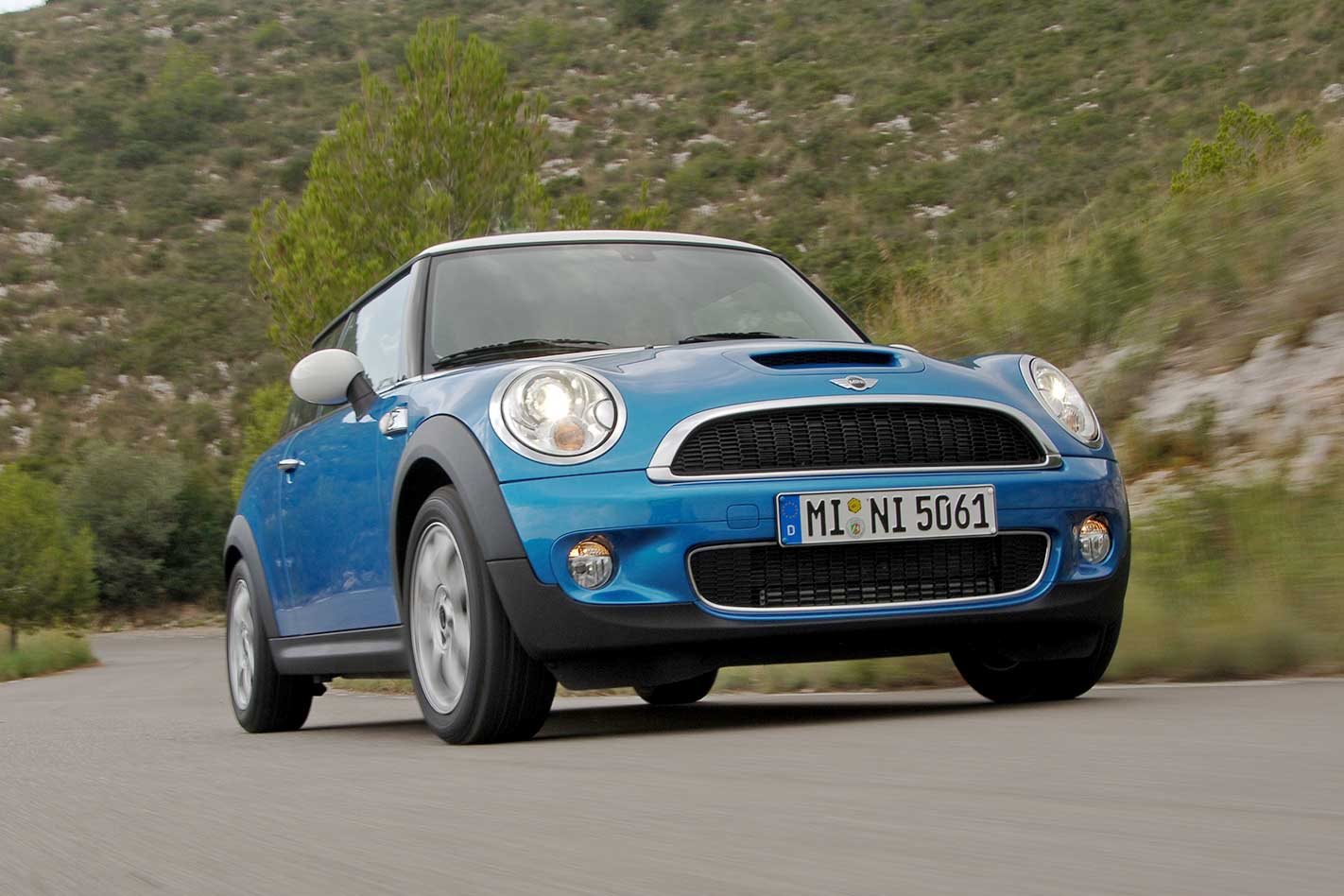When BMW took on the Mini project you get the feeling they might have wanted something a bit more inspiring than the Brazilian-built engines that would end up being the popular car’s weakest point.
This review was originally published in MOTOR’s December 2006 issue
The supercharged Cooper S was the pick of that range (at least it had character and some half-decent power), but at PCOTY last year, it failed to raise the windsock in any of the performance tests.
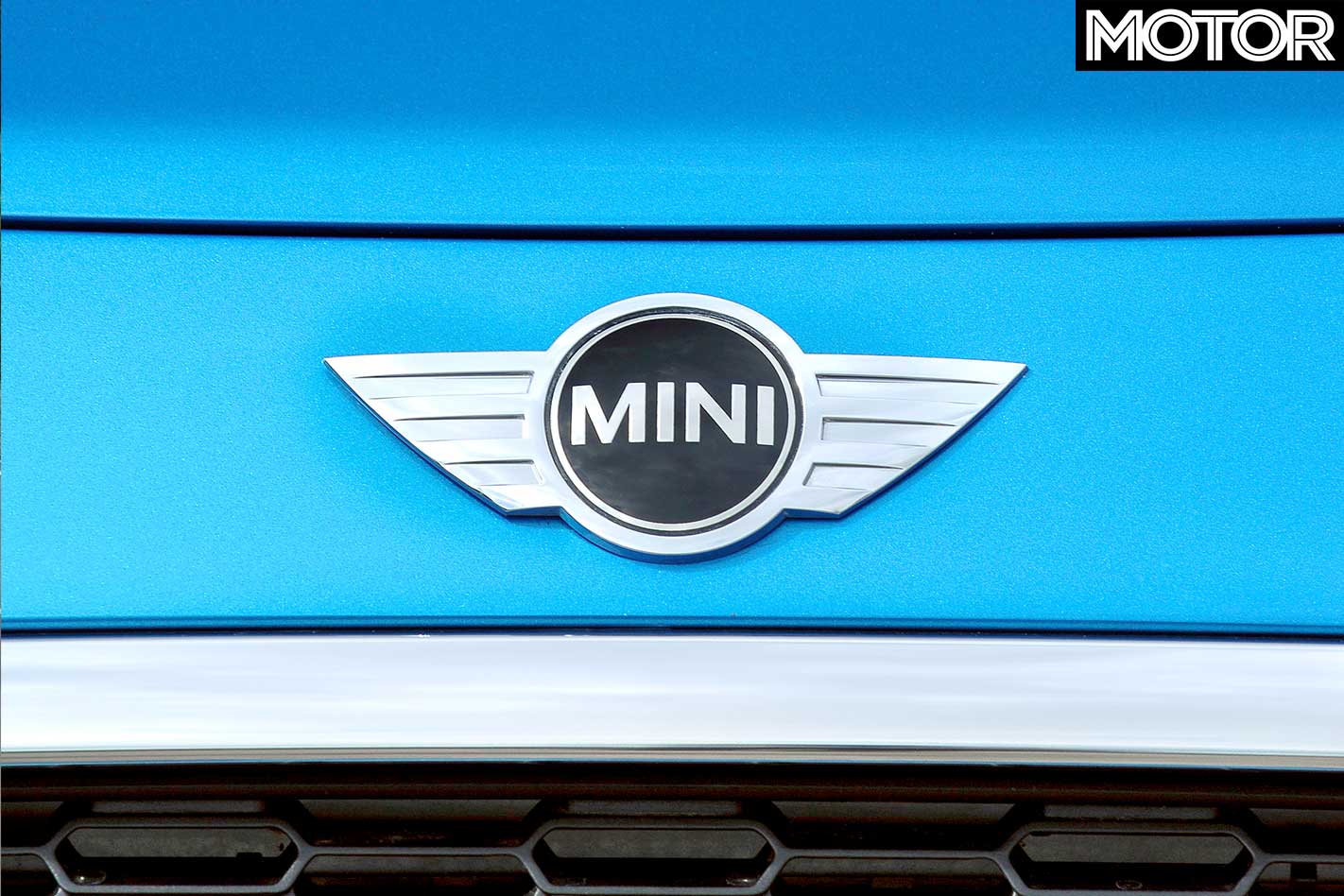
Among them is a factory at Hams Hall where they assemble the BMW/Peugeot-Citroen joint-venture engine with a turbo variant that will have performance lovers saying, “Now that’s what I’m talkin’ about!”
While the direct-injection, turbocharged Valvetronic 1.6 produces only three more kilowatts than the previous Cooper S’s supercharged Tritec unit (at 500rpm less), there’s an extra 20Nm (for a total of 240) with a bonus 20Nm of overboost that kicks in when you sink the slipper – which is most of the time. This is achieved with a twin-scroll turbocharger (not to be confused with a twin-turbo) that eliminates nearly all trace of lag and holds peak torque from 1600rpm right through to 5000.
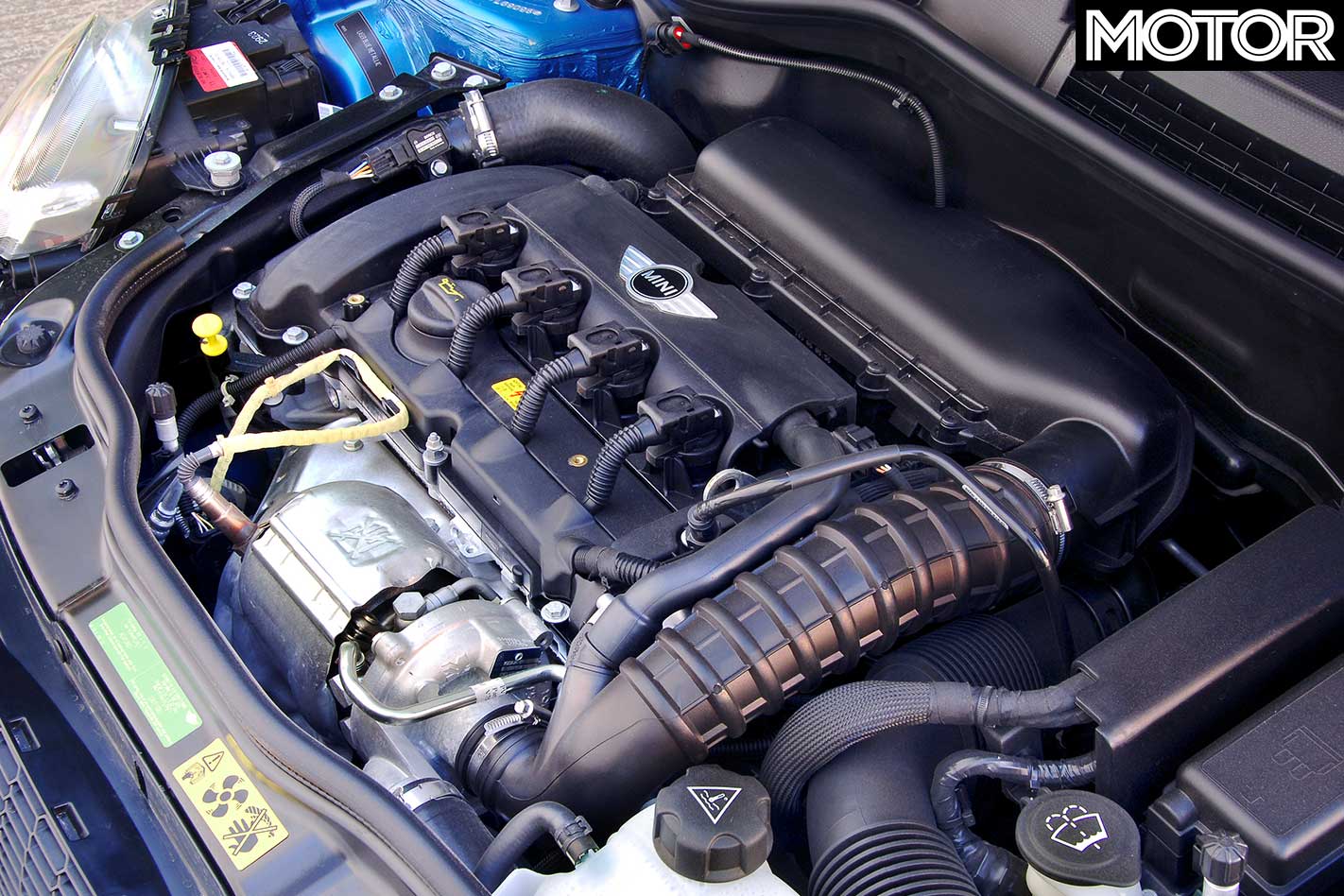
Sadly, it also means the evocative whine and burble of the old supercharged Mini has gone, replaced by a throatier drone which is pleasant, but not as inspiring. Winding it out on the open road provides a satisfying acceleration thrill and holding third gear through all but the tightest roads is a viable option with the added grunt.
However, setting and forgetting in third means you’d miss out on rowing through a pretty decent Getrag six-speed gearbox, which would be even more decent if it had a reverse lock-out collar or button.
That might then stop you accidentally hitting reverse instead of first, or a false second under the reverse gate while changing down during spirited driving. I did it three times, but probably more due to not being used to right-handed shifting.
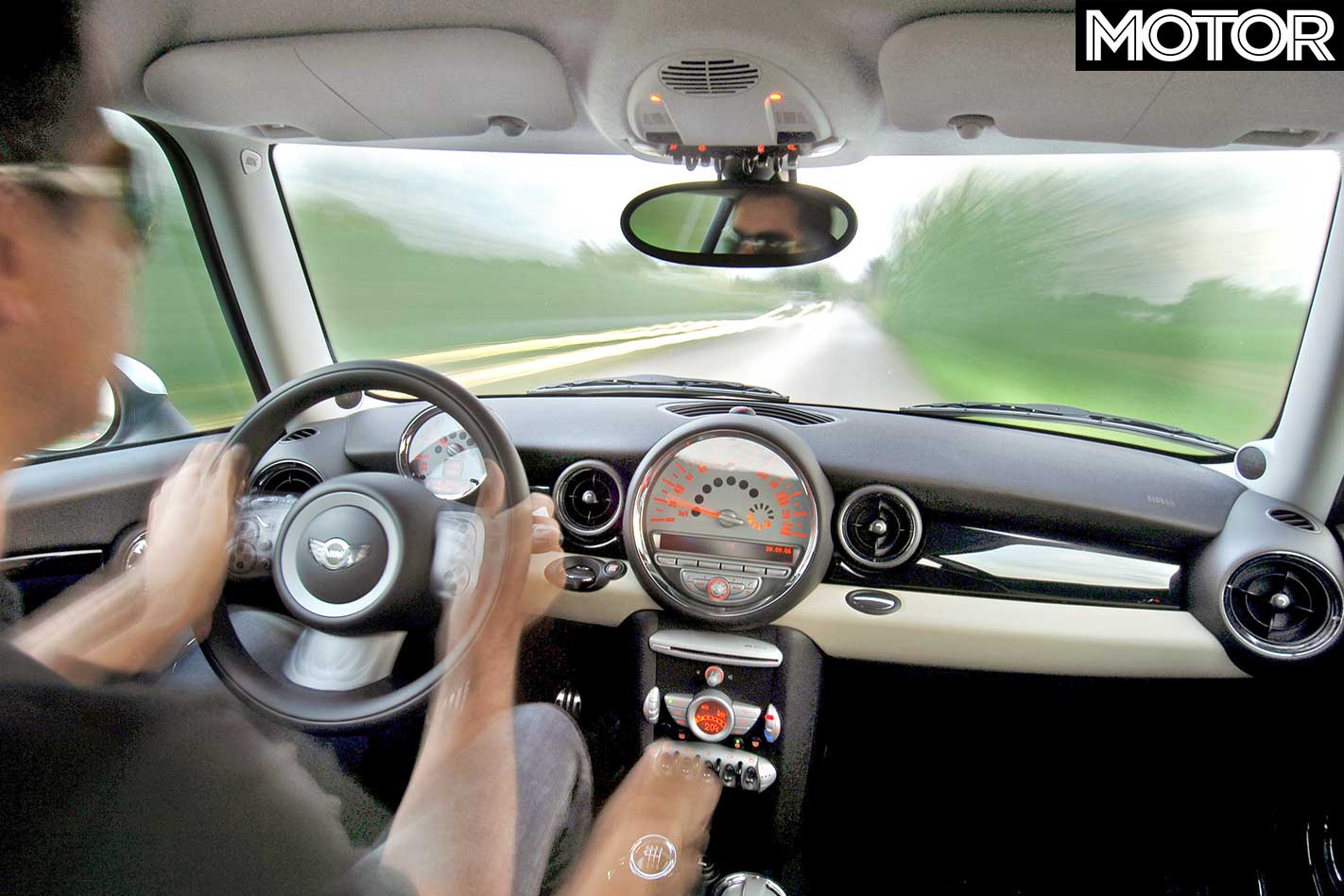
Driving on the other side of the road is an exercise in concentration as well, but I still managed to appreciate the sports suspension pack. It isn’t quite the go-kart experience Mini claims, thank Christ. I mean, have you driven a kart?
Happily, on Spanish roads at least, the new Cooper S’s suspension seemed compliant, yet still disciplined enough to keep the stiffer chassis relatively flat through corners. There’s also a firmer sports suspension option, but in the real-world driving we did on the launch, the standard suspension was just as good and a little less noisy, especially as BMW has again insisted on fitting run-flats to another of its cars.
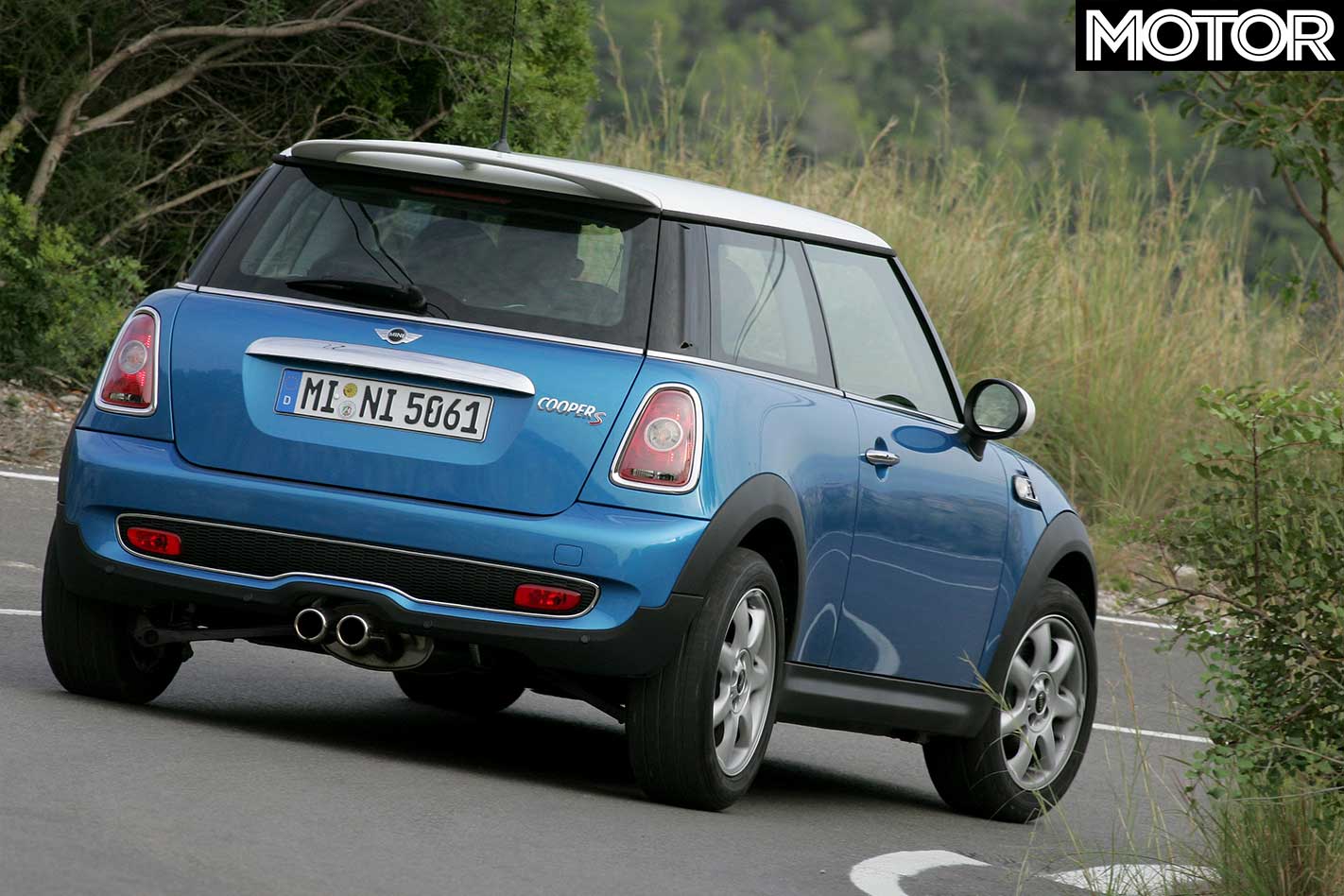
The run-flats were worn by alloy 16s on our test car, but the fact you can select from a range of wheel styles reminds you that this is BMW letting its hair down with a form-driven car.
To that end you get a multitude of other styling options – Dr Anton Heiss at the Oxford plant reckons the possible combinations number 1.5×1016, which is a wanky way of saying no two Minis need ever be the same. It’s achieved with numerous interior and exterior trim options among your basic wheel, engine and tranny combinations.
However, despite every panel being different, the basic look of the new New Mini is the same as the old one. Details aside, the only discernable differences are a slight beefing up of the guards, and raising of the bonnet and sill lines.
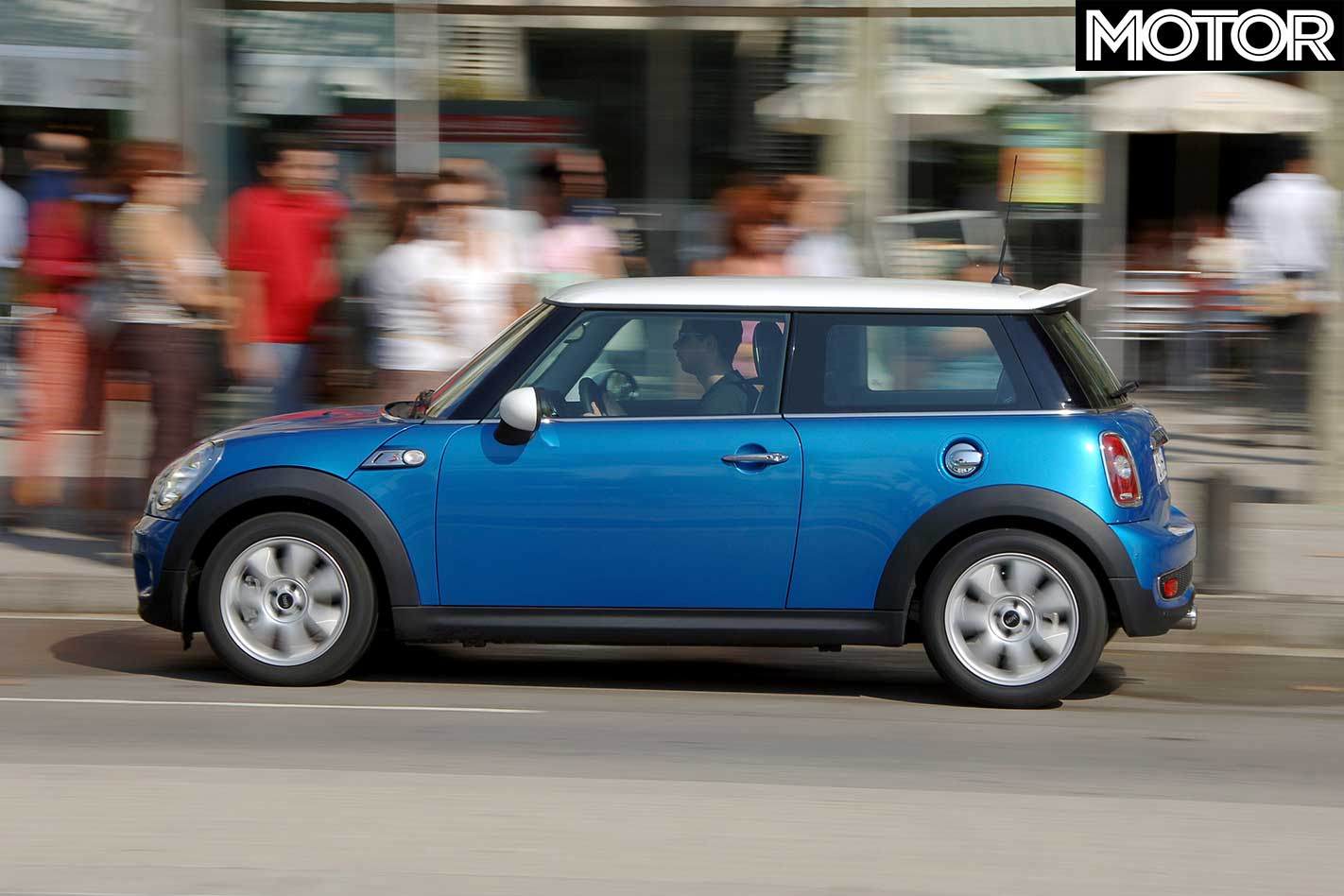
The front end changes and a 60mm overall lengthening of the car were brought in to meet pedestrian impact safety requirements, and to house the bigger new engine. Headlights are now fixed to the body as well, rather than in the bonnet, which cuts down on rattles, and the new one-piece grille is a little neater.
Inside, the major change is a new centre console halved in width to create more space in the footwells. All the audio controls that were housed down there have been moved up into the centre-mounted speedo, which, thanks to a relaxing of ADRs, will be carried over into the Australian market this time.

Whether or not having to glance to the centre dash to monitor speed is practical is arguable. Perhaps it’s there to let everyone else in the car know how fast you’re going, which will give backseat drivers something to do other than wish they’d extended the minimal leg room by more than the claimed 41mm.
Yep, it’s still a Mini, so passenger and luggage options are limited, unlike the multitude of styling enhancements to choose from. But that’s a reminder that this is an exercise in form. However, thanks to its brilliant new motor, the new new Cooper S gets some function to go with it.
FAST FACTS 2006 MINI Cooper S Engine: 1598cc 4cyl DOHC 16v turbo Power/Torque: 128kW/260Nm Weight: 1130kg 0-100km/h: 7.1sec (claimed) Price: $40,000 (est)

